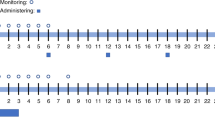Abstract
High-dose busulphan is an important component of many BMT conditioning regimens. High-dose busulphan therapy is associated with an increased risk of acute toxicity such as CNS toxicity and veno-occlusive disease (VOD). The toxicity was reported to correlate with a high AUC (area under the curve) during therapy. An intravenous form of busulphan would overcome the problems caused by inter-individual variability and bioavailability of busulphan and most probably minimize the problems with dose adjustment during therapy. The liposomal form of busulphan is an attractive alternative for intravenous administration of busulphan. In the present study, we compared the myeloablative effect of liposomal busulphan (LB) with that of the oral administration form and busulphan dissolved in organic solvent (Bus/DMSO) in mice. The pharmacokinetics of LB and Bus/DMSO were described by one compartment model while the oral data were fitted to one compartment model with first order absorption. The bioavailability of LB was 0.86 ± 0.02 compared to that obtained after the oral administration (0.40–0.74). Myelosuppression was determined using the colony-forming unit granulocyte–macrophage assay (CFU-GM) on days 1, 3, 6 and 9 after the conditioning regimen. LB resulted in significant myelosuppression from day 1 to day 9. The decrease in CFU-GM after conditioning regimen with LB was not significantly different from that observed after oral busulphan. Moreover, the administration of liposomes only to the mice did not affect the bone marrow. No side-effects of the liposomal formulation were observed. We suggest that the novel form of busulphan is a promising drug for clinical use.
This is a preview of subscription content, access via your institution
Access options
Subscribe to this journal
Receive 12 print issues and online access
$259.00 per year
only $21.58 per issue
Buy this article
- Purchase on Springer Link
- Instant access to full article PDF
Prices may be subject to local taxes which are calculated during checkout
Similar content being viewed by others
Author information
Authors and Affiliations
Rights and permissions
About this article
Cite this article
Hassan, Z., Nilsson, C. & Hassan, M. Liposomal busulphan: bioavailability and effect on bone marrow in mice. Bone Marrow Transplant 22, 913–918 (1998). https://doi.org/10.1038/sj.bmt.1701458
Received:
Accepted:
Published:
Issue Date:
DOI: https://doi.org/10.1038/sj.bmt.1701458
Keywords
This article is cited by
-
Impact of busulfan pharmacokinetics on outcome in adult patients receiving an allogeneic hematopoietic cell transplantation
Bone Marrow Transplantation (2022)
-
Porous metal–organic-framework nanoscale carriers as a potential platform for drug delivery and imaging
Nature Materials (2010)
-
The effect of administration order of BU and CY on engraftment and toxicity in HSCT mouse model
Bone Marrow Transplantation (2008)
-
GVHD after chemotherapy conditioning in allogeneic transplanted mice
Bone Marrow Transplantation (2008)
-
Pharmacokinetics of liposomal busulphan in man
Bone Marrow Transplantation (2001)



